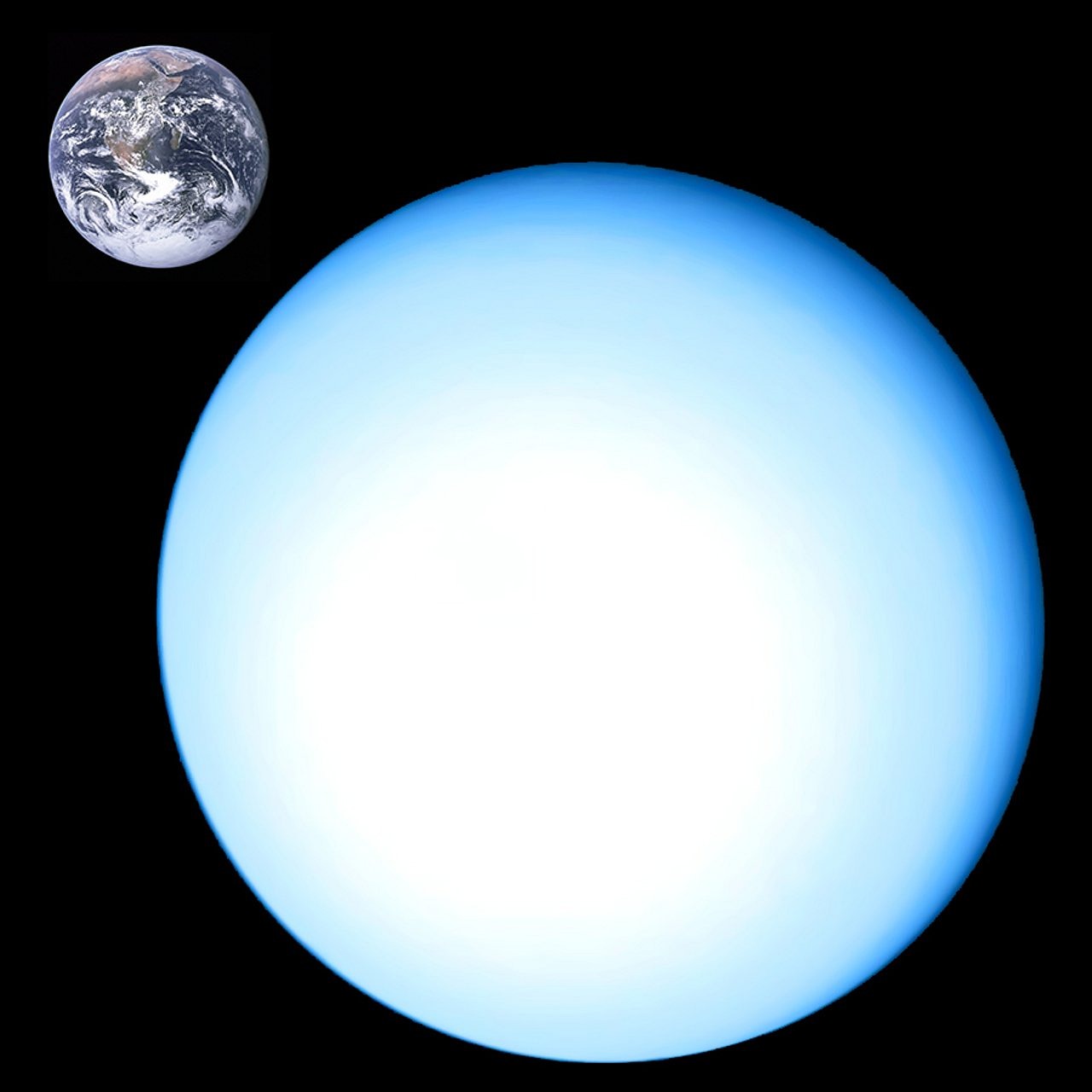Uranus, known in Greek mythology as Ouranos, embodies the heavens and sky. His Roman equivalent is Caelus. Born from Gaia, the Earth, he was deemed her equal. Their union brought forth twelve Titans, three Cyclopes, and three Hecatoncheires. However, Uranus despised his offspring and concealed them deep within the earth, prompting Gaia and their son Cronus to plot his demise. Cronus executed Uranus with a sickle, and from Uranus’s spilled blood, Gaia birthed the Erinyes, Giants, and the Meliae, leading to Cronus’s ascent to power. Uranus warned Cronus of a similar fate that awaited him at the hands of his children, initiating a series of events that would eventually culminate in the rise of Zeus and the Olympian deities.
Birth and Family Dynamics
In Hesiod’s Theogony, composed around 700 BCE, it shows that Gaia was not only the mother of Uranus but also of Pontus (the Sea) and Ourea (the Mountains).
“And Earth bore starry Heaven, first, to be An equal to herself, to cover her All over, and to be a resting-place, Always secure, for all the blessed gods.”
(Hesiod, Theogony, 128-132)
Uranus’s union with Gaia resulted in the creation of the twelve Titans: Oceanus, Coeus, Crius, Hyperion, Iapetus, Theia, Rhea, Themis, Mnemosyne, Phoebe, Tethys, and Cronus, alongside the Cyclopes and Hecatoncheires.
Overview of Orphism’s Creation Beliefs
Orphism, a spiritual movement flourishing in the 6th century BCE, is tied to Orpheus’s mythical journey into the underworld. In contrast to Hesiod’s account, Orphic myths initiate with Chronos (Time), leading to the emergence of Aether (Radiance), Chaos, and Erebus (Darkness). Chronos eventually formed an egg within Aether, from which Phanes (the creator) hatched, bringing forth both Nyx and, subsequently, Gaia and Uranus.
Eastern Variations of Creation Myths
The conflict between Cronus and Uranus is mirrored in various ancient narratives. Excavations in Boĝazköy, Turkey unearthed tablets detailing Hittite myths around the storm god Teššub, which resemble the Uranus-Cronus succession story found in Hesiod’s writings. Anu, a representation of Uranus in Hittite mythology, ruled for nine years until overthrown by his cupbearer, Kumarbi. This power struggle included Kumarbi biting off Anu’s genitals, creating a lineage that included Teššub and the Tigris River.
Furthermore, there is a Phoenician rendition of the succession tale relayed by Herennius Philo. This variant attributes the myth to Sanchuniathon, who lived around the Trojan War. Elioun, the “high one,” and his companion Berouth, parented Epigeios (Uranus) and Gaia. Following their father’s death, Epigeios ascended as king. However, he faced rebellion from his son, El (Cronus), who sought vengeance on Uranus for actions against Ge. Cronus’s overtures led to a conflict for supremacy, culminating in the castration of Uranus.
The Structure of the Universe
Within Hesiod’s work, a balanced spatial division among Tartarus, Earth, and the heavens is depicted. An anvil falling from Uranus would take nine days to reach Gaia and another nine to descend to Tartarus, said to be surrounded by bronze barriers, with Titans dwelling beyond, hidden from sight.
Uranus feared his children and confined them underground, along with the powerful Cyclopes and Hecatoncheires, causing Gaia deep sorrow. Her resolve grew, and with Cronus’s aid, she devised a strategy to end his tyranny. She crafted a sickle from adamant, which Cronus used to castrate Uranus during a moment of intimacy with Gaia, leading to significant progeny for Gaia as Uranus’s blood fell to the earth. The severed genitals were cast into the sea, giving rise to Aphrodite.
The Cycle of Destinies
Uranus condemned his offspring, labeling them “Titans,” warning them of inevitable retribution for their betrayal. This ominous warning echoed through generations, influencing Cronus, who, in turn, devoured his children at birth due to a similar prophecy. Rhea sought Uranus and Gaia’s help, leading her to hide Zeus in Crete, who later liberated his swallowed siblings.
Upon marrying Metis, Zeus learned from Uranus and Gaia of a daughter destined to equal him in wisdom and a son who would rise against him. To avert this fate, Zeus consumed Metis, yet she birthed Athena, emerging from his mind.
Oaths and Divine Witnesses
Uranus, alongside Gaia and the river Styx, often stood as a divine witness to oaths taken by the gods. In Homer’s Iliad, an oath from Hera was made in front of these celestial beings, swearing fidelity during the Trojan War. Similarly, in the Hymn to Delian Apollo, Leto swore an oath regarding Apollo’s allegiance to Delos, consistently signaling the importance of these celestial entities in divine agreements.
“Now Earth be my witness and vast Heaven above and Styx with your water cascading down.”
(Hymn to Delian Apollo, 3. 83-85)
Orphic Tribute to the Sky
Though not extensively worshipped, Uranus is honored in an Orphic hymn, celebrating him as the primordial cosmic element, guardian of gods, and overseer of existence—notably stressing his invincible essence.
An Enduring Legacy
Today, the name ‘Uranus’ is synonymous with the planet in our solar system. The seventh planet from the Sun, Uranus was identified in 1781 by William Herschel and became the first planet recognized through telescopic observation. Although initially named after King George III, it was eventually rebranded to honor the primal deity.



